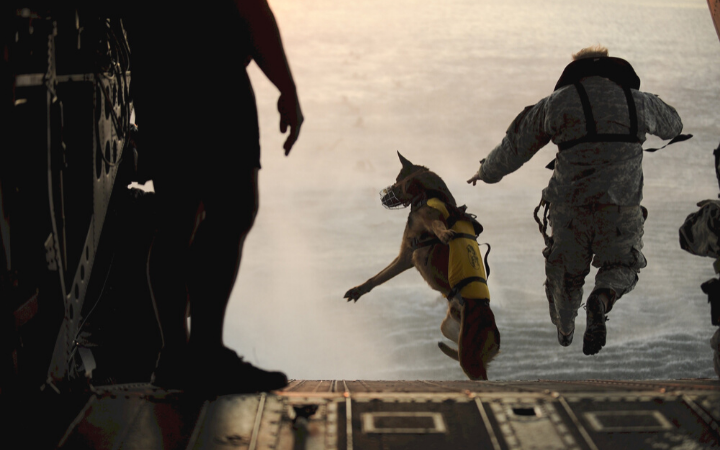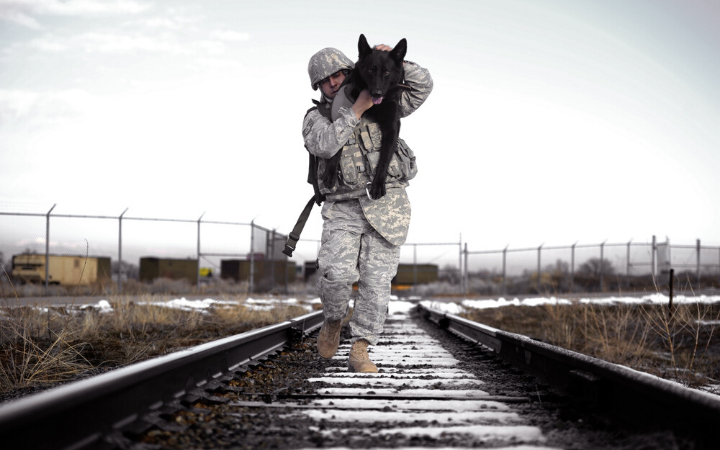Military working dogs (MWD) have been part of America’s fighting forces for decades. The public has long been fascinated with these exceptional and highly trained canines.
A proud legacy of service
America’s military has put canines to work for nearly a century.
During World War I, Germany and France trained an estimated 50,000 dogs to act as sentries, messengers and ammunition carriers, and to tend to casualties on the battlefield.
American Expeditionary Forces borrowed similarly trained dogs from British and Belgian forces when they landed in Europe late in the war.
The United States’ own war dog effort got its official start shortly after the attack on Pearl Harbor in 1941.
Before the U.S. was drawn into World War II, an influential group of professional American dog breeders formed the organization Dogs for Defense. Its mission was to procure and train military working dogs for U.S. military use.
The dogs were trained primarily for sentry duty, and started their service at Quartermaster installations on the West Coast.
In November 1942, the dogs were tested on the battlefield in North Africa and proved their worth. Canine sentries are considered more alert and responsive than their human handlers.
The U.S. military’s demand for military working dogs skyrocketed after North Africa. By July 1943 more than 11,000 war dogs were procured. Many came through the Dogs for Defense organization.
Vietnam presses military working dogs back into action
After World War II the war dog program shrank considerably. Most dogs returned stateside.
Still, dogs remained vital to a wide range of military operations.
The Air Force began using sentry dogs in Europe and the Pacific for peacetime duty. The Army used military working dogs during the Korean War for sentry and patrol functions.
On patrol, the dog and handler walked ahead while the unit followed behind to provide protection. Once the MWD alerted to possible enemy presence, the dog and handler were sent to the rear to avoid becoming combat casualties.
MWDs were called back to active duty during the Vietnam War. More than 4,500 MWDs served in Vietnam between 1965 and 1973.

Once again, MWDs proved their worth. They were deployed primarily at night, when their senses are far more acute than those of humans. They would alert to the enemy before the enemy could endanger U.S. assets or soldiers’ lives.
As national security threats changed, so did the ways in which military working dogs were trained and used.
With the rise in drug trafficking in the late 1960’s, MWDs were deployed for narcotics interdiction. In 1971 the military began training MWDs for bomb detection.
Post-9/11 military working dogs
The events of September 11, 2001 elevated MWD responsibilities to a whole new level of sophistication.
In addition to narcotics and bombs, MWDs were trained to detect the mines and IEDs scattered across Iraq and Afghanistan. Some MWDs – called “CTDs” for Combat Tracker Dogs – were trained to not only sniff out explosives and weapons, but to track the humans who left them behind.
Then there are the Multi-Purpose Canines or MPCs.
These military working dogs can be parachuted out of aircraft, ride in Zodiac boats, and keep their cool during gunfire. MPCs are fierce fighters that cost an estimated $40,000 to train.
Today there are over 2,700 military working dogs in the U.S. military serving worldwide.












0 Comments
Trackbacks/Pingbacks